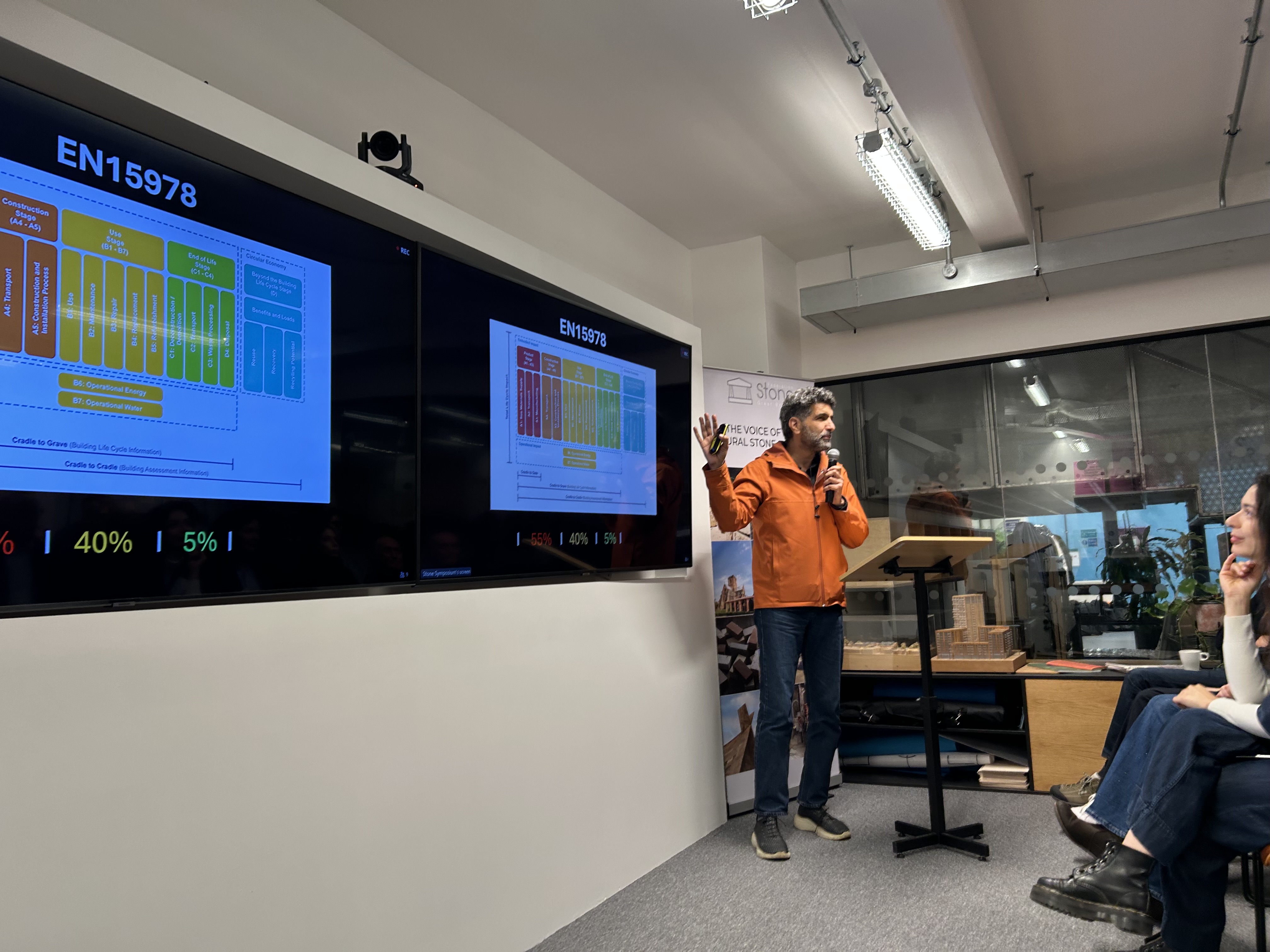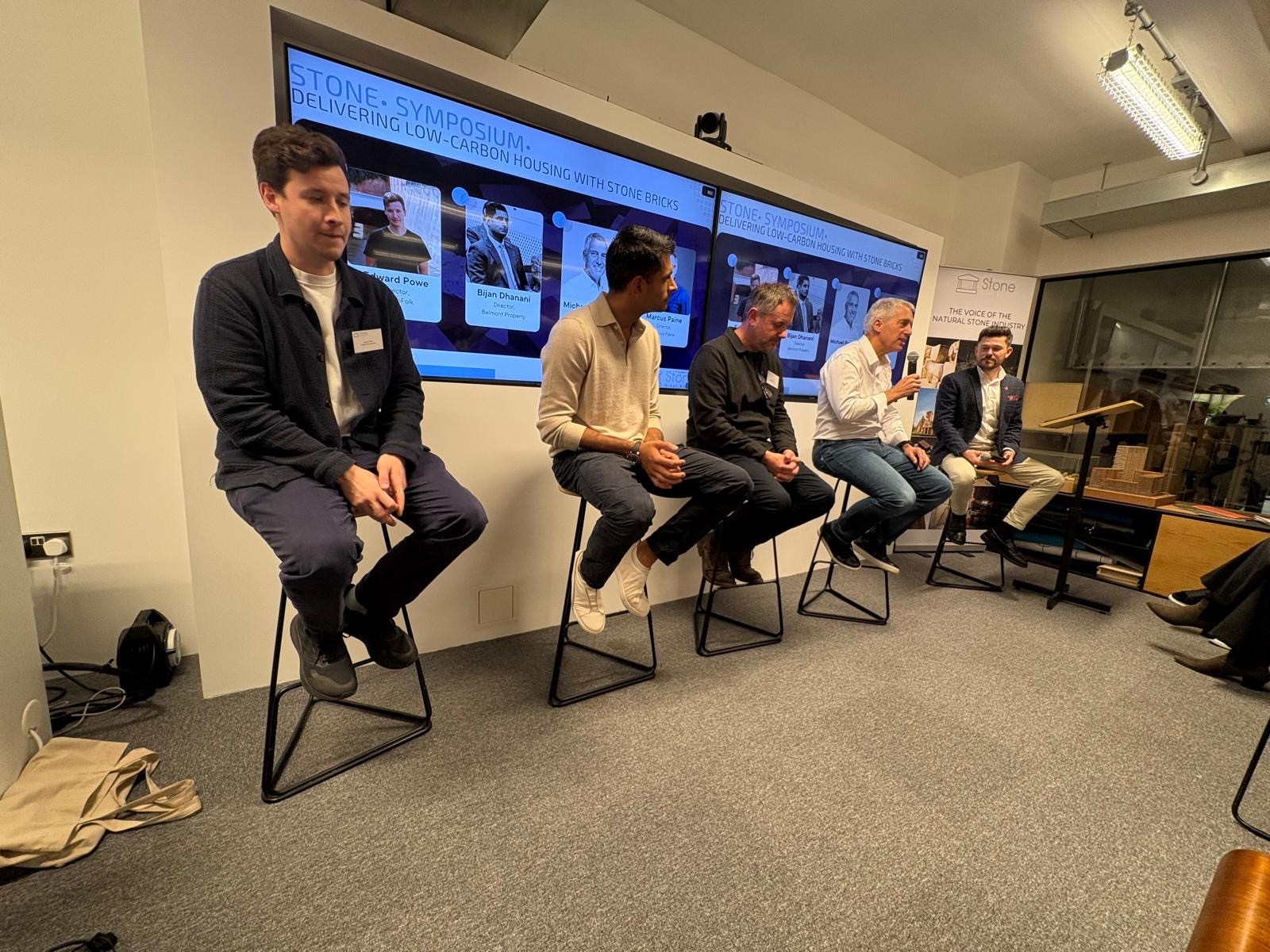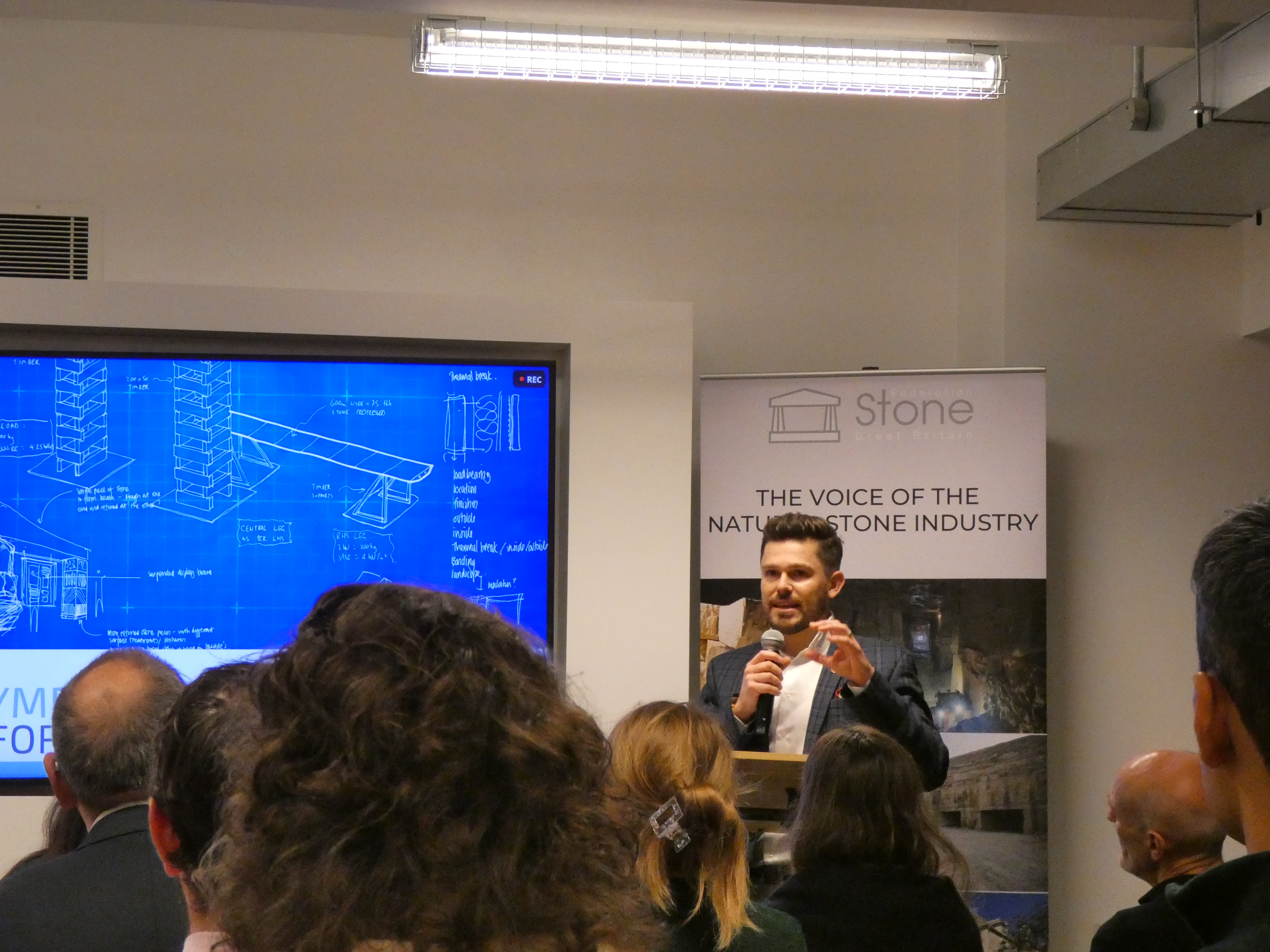News: Stone Federation's Case for Stone
Earlier this month, Stone Federation, the UK’s official trade association for the natural stone industry, welcomed more than 90 architects, engineers, academics and industry members to the third Stone Symposium: The Case for Stone. Held in London and streamed online, the event forms part of Stone Federation’s ongoing work to promote natural stone’s role in sustainable construction and support the growing interest in structural applications.
The day-long programme showcased a broad cross-section of current thinking on natural stone’s role in a low-carbon built environment. A series of presentations, panel discussions and case studies explored themes ranging from structural innovation to circularity, environmental data and design guidance—reflecting the federation’s commitment to supporting a more informed and technically confident industry.
Reuse and circularity formed one of the event’s central threads. Rachel Hoolahan of Orms opened the conversation with a session on Reuse, Circular Economy and Natural Stone, joined in discussion by Tamsin Pickeral (Szerelmey) and John Garside (PAYE Stonework & Restoration). Together they outlined emerging strategies for reusing stone at scale and the practical considerations that come with dismantling, storing and reintroducing heritage or modern stone elements into new projects.

Innovative structural applications featured prominently. Dominic Kacinskas of Groupwork and Eleonora Regni of Webb Yates walked attendees through two current projects, Finchley Road and Field House, highlighting the engineering approaches and design philosophies driving a new generation of load-bearing stone buildings (more on Finchley Road to come!) Mark Taylor and Giulliana Giorgi of Allies and Morrison, joined by Webb Yates’ Chloe Newmann, presented The Stonut: A Façade for the Future?, discussing the benefits of stone 'doughnut' panels that reduce carbon footprints.
Technical guidance and research also played a major role. Bruno Miglio of FMDC introduced Stone Federation’s structural stone industry guidance, aimed at supporting architects and engineers adopting the material in more ambitious ways. Wendel Sebastian (UCL) and Will Hawkins (University of Bath) offered an overview of academic research shaping the future of structural stone, while Lisa Nunn, Senior Geologist at FMDC, shared an in-depth look at EPD considerations, an increasingly important topic as clients demand robust, comparable environmental data.

The wider design community was represented by Peter Fisher of Bennetts Associates, who gave a material-agnostic perspective on how natural stone sits within broader sustainability strategies, and by Hutton Stone’s Marcus Paine, StudioFolk’s Edward Powe and Belmont Property’s Bijan Dhanani, who explored the opportunities for low-carbon housing using stone bricks.
Stone Federation acknowledged the generous support of event sponsors PAYE Stonework & Restoration, Stonewest, Szerelmey and Vetter UK, whose involvement helped make the symposium possible.
The federation will return with a shorter programme at London’s Futurebuild in March, where a mini Stone Symposium will continue the conversation.

